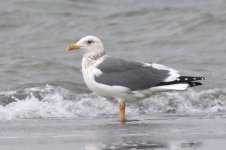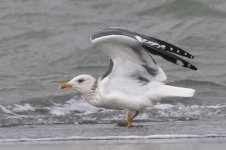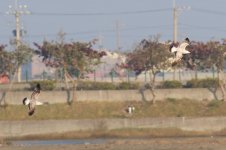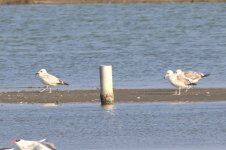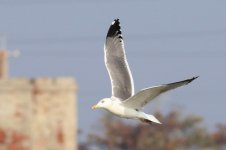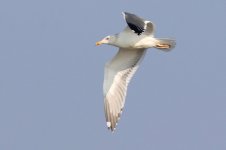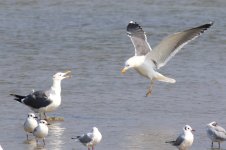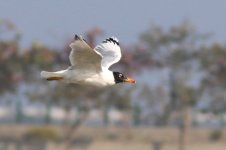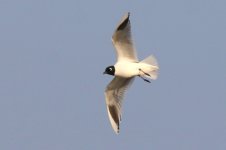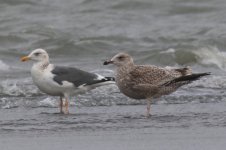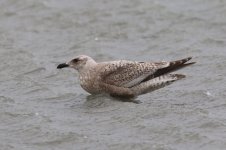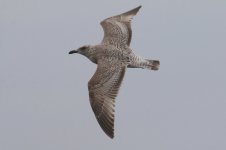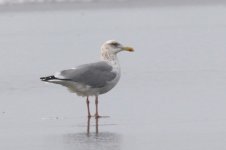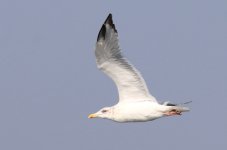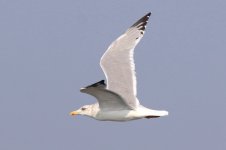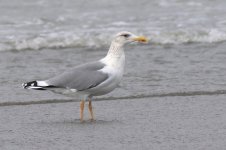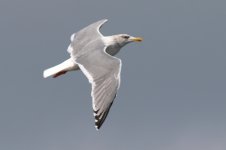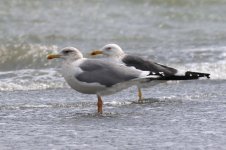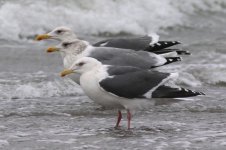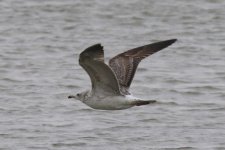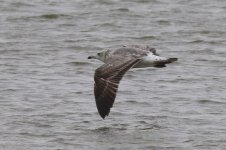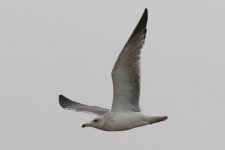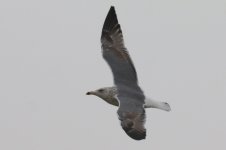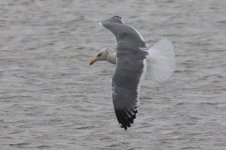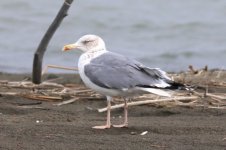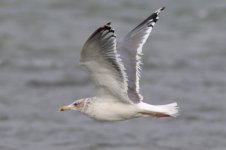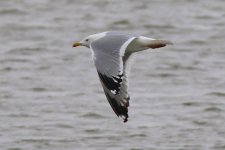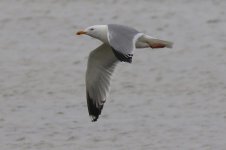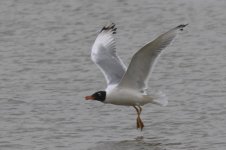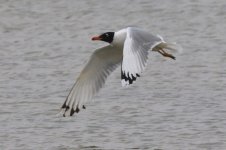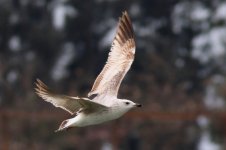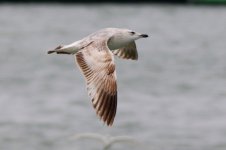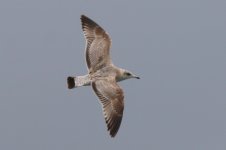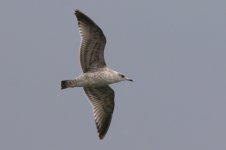As I've spent so much time at my freshwater site (specifically after first-winter mongolicus), I haven't come across too many vegae yet this spring. I have come across some, though.
Adults I identify as vegae share the same structural features as outlined for first-winters above (especially 'broad' Slaty-backed Gull-like heads), are typically still in primary moult in February, and (as not yet in breeding condition) have duller-looking bills than either taimyrensis or mongolicus at this time. Contra what is suggested/intimated by much of the literature, the majority of these birds do not have extensive (American Herring Gull-like) head markings, instead have something more like taimyrensis but with more dusky marks and streaking around the eye. They are as pale or even paler-mantled than mongolicus, and have much narrower trailing edge also. The legs of most are pink-bubble gum pink, and lack the grey tones of pink-legged mongolicus.
Measuring black to P6, to P5, to P4 or wherever seems to be entirely useless (claptrap IMO) where these three gull taxa are concerned, as there seems to be complete overlap between all three of them (there should be less black in the wingtip of vegae, but to P3 in one of the individuals attached). Birds I consider to be vegae generally lack much of a tongue down the underside of P10 (so mostly black, like taimyrensis), but then quite abruptly show less black in the wing from P9 inwards (all the black is skewed to the front of the wing, unlike taimyrensis).
Again, the above relate to 'birds I consider to be vegae'. I accept I could be wrong on all counts! Attached are two different individuals.
Attached: Adult vegae (ID'd by structure, pale saddle, dull bill base, winter head markings more extensive than either taimyrensis or mongolicus, pink legs, incomplete primary moult).




